
Monday, May 12 is Buddha Day (also known as Vesak, Visak Bochea, Buddha Jayanti, Buddha Purnima, and Buddha Pournami), a Buddhist festival celebrated across South, Southeast, and East Asia. It is the birthday of the historical Buddha and founder of Buddhism, Siddhartha Gautama. According to Buddhist tradition Siddhartha (c. 563-483 BCE) was born to Queen Maya Devi and King Suddhodana at the Mayadevi Temple in Nepal. Siddhartha was born while his parents were on a journey, the queen paused at a temple mid-journey to give birth to the child who would become known as The Enlightened One. Within the temple gardens, an Ashoka Pillar dating from 249 BCE marks the place the Buddha was born.
Fun fact! “Pillars of Ashoka” were monuments erected by Emperor Ashoka the Great sometime around 250 BCE. Ashoka’s massive kingdom spanned modern-day India, Afghanistan, and Bangladesh, where many remaining pillars can be found. Ashoka’s early rule was marked by violent, bloody wars before he converted to Buddhism and helped spread Buddhist beliefs by inscribing stones and pillars across South Asia with “edicts” on ethical behavior and tolerance.
Buddhist tradition describes Siddhartha’s conception and birth as miracles, similar to Christianity and other religious traditions. The conception occurred during a dream in which the Queen saw a white elephant enter the right side of her body. She later gave birth to the child-Buddha while she was still standing, grasping a tree in the garden. The newborn emerged from Maya’s right side and proceeded to take seven steps, on his own, from which blossomed lotus flowers, a symbol of enlightenment. Once back in the palace, the court astrologer predicted that he would become either a great king or a great religious teacher, and he was given the name Siddhartha (“He who achieves His Goal”). Siddhartha’s father hoped for the former outcome—a king—and designed to keep the child protected from any pain or scenes of suffering that might lead him down a spiritual path; but as a young man, the prince escaped the palace, came face to face with the real suffering in his kingdom, and gave up his former life to become a religious ascetic. By the time he was 35, Siddhartha would have a new name: Shakyamuni, “sage of the Sakya tribe.”
Fun fact! The lotus flower is meaningful to many different cultures. Similar to other water-plants, it is often taken as a symbol of beauty and serenity emerging from hardship, just as the beautiful flowers rise above muddy waters.
To rise above the suffering of the world, Siddhartha wandered as an ascetic, with no possessions or currency, and ultimately settled beneath a bodhi (fig) tree in present-day Bihar, India. There he meditated intensely—some accounts say for one day and night; some say three; and others say 45—in which he resisted the temptations of the trickster-god Mara and purified his mind, allowing true knowledge to enter. He summarized the ideas of his enlightenment in Buddhism’s “four noble truths”:
1. Life is suffering. There’s just no way around it. Physical pain and mental unease are baked into the life of a human.
2. Suffering is caused by attachment—clinging to things, wealth, or ideas that do not serve us.
3. Suffering can end.
4. There is a path out of suffering.
To celebrate Buddha’s birthday, he definitely doesn’t want gifts—that’s just more baggage to get attached to! Instead, you might take a look at one of his teachings, and see if it applies to your life. Here’s a good one: the Buddha said suffering comes in two forms: natural suffering and self-inflicted suffering. “Natural suffering” is out of your control—disasters, wars, infections, etc.—but “self-inflicted suffering,” which is often way worse, is well within your control. This is the suffering we hold onto and amplify when we could just let it slip away: the wound you keep poking and making it worse; the mistake or insult you replay a million times in your head. In other words, life will sometimes drop a rock on your head; but you don’t have to pick it up and keep bashing yourself with it! Namaste!
Check out some reading suggestions about the life and teachings of Buddha.
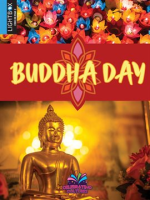
Buddha Day by Jill Foran
Buddha Day honors the birthday of the Buddha. He was the founder of a religion called Buddhism. Find out more in Buddha Day, a title in the Celebrating Cultures series.
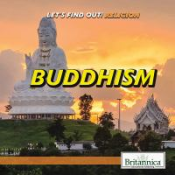
Buddhism by Katy Brennan
Built around the teachings of the Buddha, who lived in modern-day Nepal about 2,500 years ago, Buddhism is one of the world's largest and oldest spiritual traditions. In addition to its adherents in southern, central, and eastern Asia, today Buddhism has many followers in the Western world who seek through it a peaceful mind, freedom from expectations, and spiritual enlightenment.
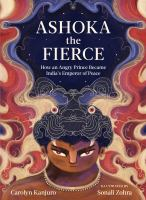
Ashoka the fierce: how an angry prince became India's emperor of peace by Carolyn Kanjuro
A children's story (ages 6-10) about Ashoka, the famed Indian emperor (c. 268 to 232 BCE), who began his rule with incredible violence and cruelty but later had a great transformation and became an important propagator of Buddhism. This telling will highlight the potential for transformation upon seeing the suffering caused by following one's own desires and discovering the joy in harnessing one's power and energy to benefit others.

The Legacy of Ashoka by Minerva Smith
Ashoka the Great was once a fierce warrior, but his transformation into a ruler of peace changed the course of history. After witnessing the horrors of war, he turned away from conquest and devoted his reign to spreading compassion, justice, and the teachings of Buddhism. His influence shaped not only India but also cultures across Asia, leaving a legacy that continues to inspire generations.
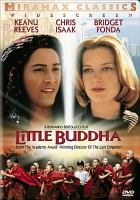
Little Buddha on DVD
In a big American city, a boy and his family discover a story about a prince in a land of miracles. But the miracle becomes real when Tibetan monks appear, searching for their leader's reincarnation -- who they believe has been reborn in the boy. Suddenly, their worlds meet, leading the Americans on an extraordinary adventure.
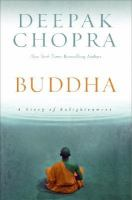
Buddha: a story of enlightenment by Deepak Chopra
An account of the life of the Buddha, written for western readers, traces his spiritual journey while explaining how his experiences and teachings have changed the world and continue to influence every facet of life.
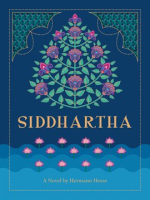
Siddhartha by Hermann Hesse
Follow Siddhartha on a journey toward peace and enlightenment in this gorgeous edition of Herman Hesse's lyrical masterwork.
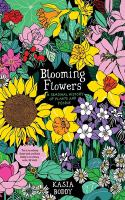
Blooming flowers: a seasonal history of plants and people by Kasia Boddy
An evocative and richly illustrated exploration of flowers and how, over the centuries, they have given us so much sustenance, meaning, and pleasure. The bright yellow of a marigold and the cheerful red of a geranium, the evocative fragrance of a lotus or a saffron-infused paella--there is no end of reasons to love flowers.
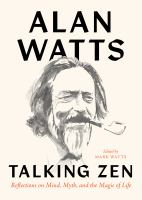
Talking Zen: reflections on mind, myth, and the magic of life by Alan Watts
Alan Watts's essays and talks range widely through psychology, art, religion, and politics, but always come home to the Zen core. For those familiar with Alan Watts's style of presentation, the wonderful, memorable, and prophetic style of his voice is captured in this volume. Talking Zen puts on display Watts's ability to explore the very subtle philosophies, those common across traditions and those unique to Zen, in ordinary and accessible language.
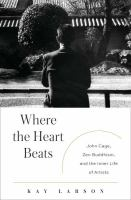
Where the heart beats: John Cage, Zen Buddhism, and the inner life of artists by Kay Larson
Where the Heart Beats is the story of the tremendous changes sweeping through American culture following the Second World War, a time when the arts in America broke away from centuries of tradition and reinvented themselves.
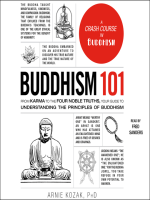
Buddhism 101: from karma to the four noble truths, your guide to understanding the principles of Buddhism by Arnold Kozak
Buddhism was founded thousands of years ago, and has inspired millions of people with its peaceful teachings. Buddhism 101 highlights and explains the central concepts of Buddhism to the modern reader, with information on mindfulness, karma, The Four Noble Truths, the Middle Way, and more.